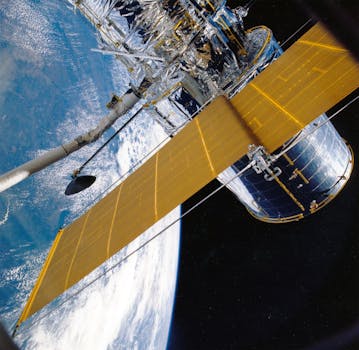
Introduction to LEO Satellites
LEO satellites, or Low Earth Orbit satellites, are artificial satellites that orbit the Earth at an altitude of around 160 to 2,000 kilometers. The focus keyword LEO satellites have gained significant attention in recent years due to their potential to revolutionize global communication and connectivity. With the ability to provide faster, more reliable, and cost-effective connectivity solutions, LEO satellites are poised to transform the way we access information and communicate with each other.
One of the key advantages of LEO satellites is their low latency, which enables real-time communication and data transfer. This is particularly important for applications such as video conferencing, online gaming, and financial transactions, where high-speed and low-latency connectivity is crucial. Additionally, LEO satellites can provide coverage in remote and underserved areas, where traditional communication infrastructure is limited or non-existent.
Applications and Benefits of LEO Satellites
LEO satellites have a wide range of applications, including satellite communication, Earth observation, navigation, and scientific research. In terms of satellite communication, LEO satellites can provide broadband internet access, mobile connectivity, and backhaul services for cellular networks. They can also be used for disaster response and recovery, providing critical communication services in areas affected by natural disasters or other crises.
The benefits of LEO satellites are numerous, and they have the potential to drive significant economic and social benefits. For example, they can enable remote communities to access education, healthcare, and other essential services, promoting digital inclusion and reducing the digital divide. They can also support economic development by providing reliable and high-speed connectivity for businesses, governments, and individuals.
Challenges and Future Developments
Despite the many benefits of LEO satellites, there are also several challenges that need to be addressed. These include regulatory issues, such as obtaining licenses and complying with international regulations, as well as technical challenges, such as developing and launching the satellites, and establishing the necessary ground infrastructure. Additionally, there are concerns about the environmental impact of LEO satellites, including the risk of space debris and the potential for interference with other satellites and systems.
Looking to the future, it is clear that LEO satellites will play an increasingly important role in shaping the future of global communication and connectivity. With ongoing advancements in technology and the development of new applications and services, the potential of LEO satellites is vast and exciting. As the satellite industry continues to evolve, we can expect to see new innovations and developments that will further transform the way we communicate and access information.
Conclusion
In conclusion, LEO satellites are a game-changer for global communication and connectivity, offering faster, more reliable, and cost-effective connectivity solutions. With their low latency, wide range of applications, and numerous benefits, LEO satellites have the potential to drive significant economic and social benefits, particularly in remote and underserved areas. As the satellite industry continues to evolve, it is essential to address the challenges associated with LEO satellites, including regulatory issues, technical challenges, and environmental concerns.




